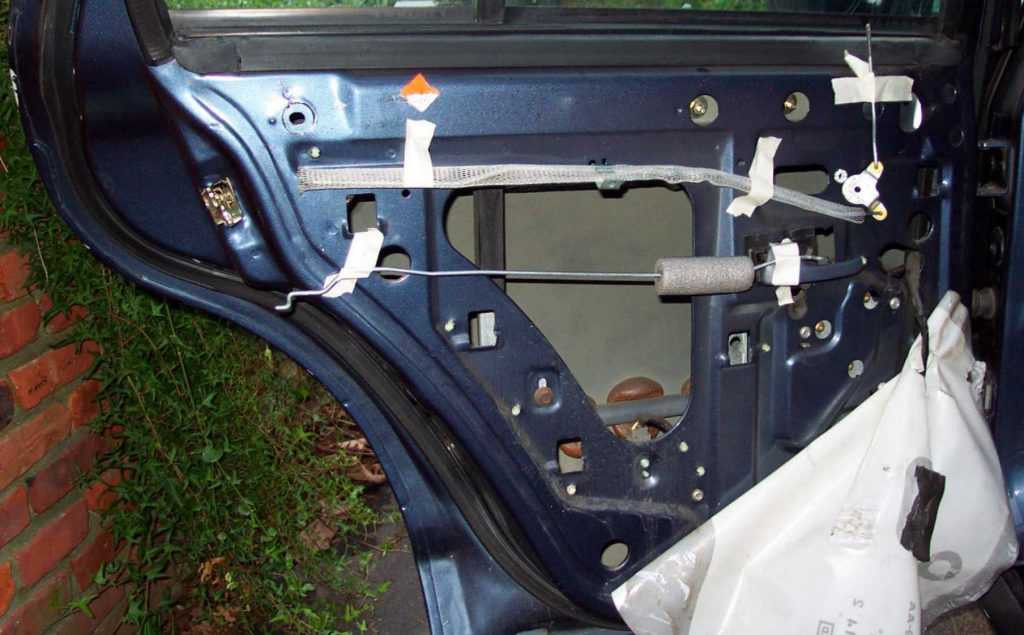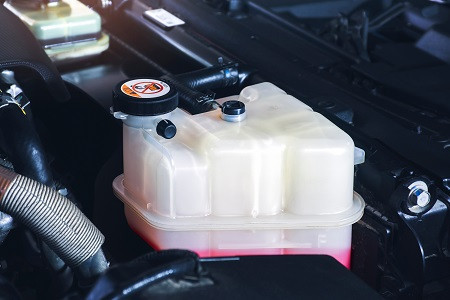How To Fix The Interior Roof Of Your Car Easily

Fixing the interior roof of your car, also known as the headliner, can refresh your vehicle’s interior. At CARDIAGTECH.NET, we offer expert tips and solutions to tackle this common issue. Discover affordable and effective methods to restore your car’s headliner and maintain its pristine condition. Explore solutions like headliner repair, automotive upholstery repair, and DIY car restoration techniques.
1. Understanding Car Headliners
A headliner is a crucial part of your car’s interior. It’s the fabric attached to the roof’s frame, providing a smooth texture, sound absorption, and temperature regulation. Typically made of multiple layers, including a foam backing (often polyurethane), it’s attached to a headliner board that secures to the roof’s interior. This design insulates the car from heat and noise, improving the overall comfort.
Without the headliner, your car’s interior can become significantly hotter when parked in the sun, and road noise becomes more noticeable. A well-maintained headliner enhances the acoustics for customized audio systems.
 Car headliner secured to the roof framing
Car headliner secured to the roof framing
The car headliner is a fabric that is secured to the roof framing. Photo: liveabout.com
2. Common Causes of a Sagging Headliner
A sagging headliner not only looks bad but can also be distracting while driving. Understanding the causes can help you prevent it.
2.1. Heat and Sunlight
Extreme heat can cause the headliner glue to melt, leading the fabric to detach from the backing board. Direct sunlight exacerbates this issue, especially in hotter climates.
2.2. Moisture
Humidity and leaks can seep into the headliner, causing the foam backing to absorb moisture and lose its shape. This leads to warping and sagging. Water leaks from sunroofs or faulty seals are common culprits.
2.3. Poor Installation
If the headliner wasn’t properly installed initially, with insufficient glue or incorrect techniques, it’s more likely to sag prematurely. Some vehicles lack adequate waterproofing, allowing water to damage the adhesive.
2.4. Physical Damage
Passengers, especially children and pets, can inadvertently pull, scratch, or damage the headliner. These actions put physical strain on the fabric, accelerating the sagging process.
| Cause | Description | Prevention |
|---|---|---|
| Heat and Sunlight | High temperatures melt the glue, causing fabric detachment. | Park in the shade, use window deflectors. |
| Moisture | Humidity and leaks warp the foam backing. | Regularly check and maintain seals, fix leaks promptly. |
| Poor Installation | Insufficient glue or improper techniques lead to premature sagging. | Ensure professional installation with quality materials. |
| Physical Damage | Passengers pulling or scratching the headliner. | Keep children and pets away from the headliner. |
3. How to Fix Sagging Headliner Without Removing It: DIY Methods
Replacing the entire headliner can be expensive. Here are several methods to fix a sagging headliner without removing it, saving you time and money.
 Fix sagging headliner
Fix sagging headliner
Sagging headliner is caused by poor maintenance and neglected actions of the owners. Photo: liveabout.com
3.1. Old-Fashioned Gluing
Gluing is effective for small, localized sagging areas, such as corners or edges. It requires a special headlining adhesive, as ordinary glue won’t hold up against heat and humidity.
- Preparation: Clean the sagging area with a soft brush to remove any loose debris.
- Application: Apply the headlining adhesive evenly to both the fabric and the backing board. A spray adhesive is best for even distribution.
- Attachment: Press the fabric firmly against the board and hold it in place for a few minutes until the adhesive sets.
- Drying: Allow the adhesive to dry completely, following the manufacturer’s instructions.
Recommended Tools:
- Headlining adhesive spray (e.g., 3M Headliner Adhesive)
- Soft brush
- Clean cloth
3.2. Twist Pins
Twist pins are an inexpensive and straightforward solution. Also known as saggy stoppers, they secure the headliner in place without causing significant damage.
- Insertion: Push the twist pins through the fabric into the foam backing board.
- Arrangement: Arrange the pins in a visually pleasing pattern to distribute the support evenly.
- Securing: Twist the pins to lock them in place, ensuring the fabric is held firmly against the board.
Recommended Tools:
- Clear-headed twist pins (saggy stoppers)
3.3. Steam Cleaner and Paint Roller Combo
This method uses steam to reactivate the old adhesive, allowing you to reattach the fabric. A paint roller helps smooth out any creases or wrinkles.
- Steaming: Use a car steam cleaner to gently heat the sagging area. This will soften the old glue.
- Rolling: Immediately after steaming, use a paint roller to press the fabric back onto the backing board.
- Smoothing: Roll firmly and evenly to remove any air bubbles and ensure a smooth finish.
Recommended Tools:
- Car steam cleaner
- Paint roller
Video Resource:
Check out this video for more details on truck/car/van headliner repair tips and tricks:
https://www.youtube.com/watch?v=K9Y4cQ2mzCQ
3.4. Fabric Glue and Clamps
For more extensive sagging, fabric glue and clamps can provide a more secure and longer-lasting fix.
- Preparation: Clean the area and apply fabric glue to both the headliner and the exposed backing.
- Clamping: Use clamps to hold the fabric in place while the glue dries.
- Drying: Allow the glue to dry completely, usually for 24 hours, before removing the clamps.
Recommended Tools:
- Fabric glue
- Clamps
| Method | Description | Tools Required | Pros | Cons |
|---|---|---|---|---|
| Old-Fashioned Gluing | Apply adhesive to reattach fabric. | Headlining adhesive spray, soft brush, clean cloth | Effective for small areas, easy to apply. | Requires specific adhesive, may not work for large sagging areas. |
| Twist Pins | Secure fabric with clear-headed pins. | Clear-headed twist pins (saggy stoppers) | Inexpensive, straightforward, prevents further damage. | Visible pins, may not be aesthetically pleasing. |
| Steam Cleaner and Paint Roller | Reactivate glue with steam and smooth with a roller. | Car steam cleaner, paint roller | Effective for edges, can smooth out wrinkles. | Requires specific tools, can damage fabric if too much steam is used. |
| Fabric Glue and Clamps | Use fabric glue and clamps for a secure hold. | Fabric glue, clamps | Provides a strong, long-lasting hold. | Requires time for drying, may leave residue if not applied carefully. |
4. Preventing Sagging Headliners
Prevention is always better than cure. Here are some tips to protect your car’s headliner and extend its lifespan.
- Park in the Shade: Avoid direct sunlight whenever possible.
- Use Window Deflectors: These help to reduce the amount of sunlight and heat entering your car.
- Maintain Rubber Seals: Regularly check and maintain rubber seals to prevent water leaks.
- Monitor Kids and Pets: Ensure children and pets don’t pull or scratch the headliner.
- Avoid Home Treatments: Refrain from using hairspray, staples, or regular pins.
- Gentle Cleaning: When cleaning the headliner, use a soft cloth and mild detergent. Avoid excessive pressure or steam.
5. Cost of Headliner Replacement
If DIY methods are not sufficient, you might consider replacing the headliner. The cost varies based on your car’s model and the complexity of the job.
- Simple Design (Sedan/Hatchback/Coupe): $300 – $750
- Typical SUV/Crossover with Sunroof: $500 – $900
- Luxury Vehicle: $1,000 – $6,000
The average cost to replace a car’s headliner ranges from $500 to $1,000, but can exceed these ranges based on the specifics of the vehicle.
| Vehicle Type | Average Cost |
|---|---|
| Simple Design (Sedan/Hatchback/Coupe) | $300 – $750 |
| Typical SUV/Crossover with Sunroof/Moonroof | $500 – $900 |
| Luxury Vehicle | $1,000 – $6,000 |
6. When to Seek Professional Help
While DIY methods can be effective, some situations require professional intervention.
- Extensive Damage: If the headliner is severely damaged or sagging throughout, professional replacement is the best option.
- Complex Designs: Vehicles with intricate headliner designs or numerous accessories may require specialized skills.
- Lack of Confidence: If you are uncomfortable performing the repair yourself, seek professional assistance to avoid further damage.
7. Enhance Your Car Repair Toolkit with CARDIAGTECH.NET
At CARDIAGTECH.NET, we understand the importance of having the right tools for automotive repairs. Whether you’re tackling a sagging headliner or performing other maintenance tasks, our high-quality tools can make the job easier and more efficient.
Explore our range of:
- Headlining Adhesives: Ensure a strong, lasting bond with our premium adhesives.
- Steam Cleaners: Get the job done with the best car steam cleaner, enabling you to get rid of any stubborn task.
- Upholstery Tools: Secure the headliner in place with our twist pins and clamps.
- Cleaning Supplies: Keep your car’s interior looking pristine.
8. Why Choose CARDIAGTECH.NET?
- Expert Advice: Benefit from our extensive experience in automotive repair.
- Quality Products: We offer only the highest quality tools and supplies.
- Customer Support: Our team is ready to assist you with any questions or concerns.
8.1. Addressing Your Challenges
We understand the challenges you face as automotive technicians and shop owners:
- Physical Demands: The job requires significant physical strength and endurance.
- Exposure to Chemicals: Constant exposure to oil, grease, and chemicals can be harmful.
- Keeping Up with Technology: The automotive industry is constantly evolving, requiring continuous learning.
- Time Constraints: Meeting deadlines and managing time effectively can be stressful.
- Competition: Facing competition from other garages and service providers.
8.2. How CARDIAGTECH.NET Can Help
Our tools and equipment are designed to:
- Improve Efficiency: Reduce repair times and increase productivity.
- Enhance Accuracy: Ensure precise and safe repairs.
- Save Costs: Minimize repair costs and reduce waste.
- Boost Revenue: Increase customer satisfaction and drive repeat business.
- Elevate Reputation: Enhance your shop’s reputation for quality service.
8.3. Call to Action
Ready to take your automotive repair capabilities to the next level? Contact CARDIAGTECH.NET today for expert advice and top-quality tools. Our team is ready to assist you in selecting the right equipment for your needs.
Contact us:
- Address: 276 Reock St, City of Orange, NJ 07050, United States
- WhatsApp: +1 (641) 206-8880
- Website: CARDIAGTECH.NET
Don’t let a sagging headliner detract from your car’s appearance and comfort. With the right tools and techniques, you can restore it to its former glory. Trust CARDIAGTECH.NET to provide the solutions you need.
9. Conclusion
Fixing a sagging headliner doesn’t have to be a daunting task. With the right approach, you can restore your car’s interior and improve your driving experience. Remember to identify the cause of the sagging, choose the appropriate repair method, and take preventative measures to avoid future issues. Whether you opt for a DIY fix or seek professional help, maintaining your car’s headliner is a worthwhile investment.
10. FAQs
10.1. How do you know if your ceiling is sagging?
Signs of a sagging car ceiling include:
- Cracking sounds when the car is shaking or when slamming doors.
- Drooping plasterboard sheeting or cornice.
- Visible cracking.
- Tiny circles or blisters forming as lines produced by nails or screws.
10.2. Is it OK to fix the headliner sagging myself?
Yes, you can fix minor sagging issues yourself. Replacement kits are readily available online and at auto parts retailers. These kits typically include small screws that secure the headliner to the foam backing.
10.3. Can I paint a headliner?
Painting a headliner is not recommended. It requires extensive preparation to avoid getting paint on the trim and glass. The paint is also unlikely to withstand the temperature-related expansion and contraction inside a car.
10.4. Does car insurance cover the cost of car headliner replacement?
Most car insurance policies do not cover interior upholstery, trim, and headliner replacement unless the damage is due to a covered event like a collision or vandalism.






